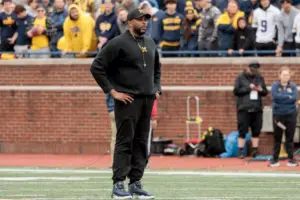
A significant wealth transfer of approximately $124 trillion is anticipated to occur before 2048, with around $105 trillion designated for heirs and $18 trillion earmarked for charitable giving, according to a projection by Cerulli Associates. This shift will predominantly involve funds from the baby boomer generation and older cohorts, contributing nearly $100 trillion, which represents a staggering 81% of all transfers.
For many grandparents, this presents an opportunity not only to support their grandchildren financially but also to reduce their estate size and associated taxes upon passing. Gifting can serve as a means to instill values such as generosity while simultaneously laying a robust foundation for future financial success.
Gifting strategies require careful consideration of several factors. The age of the grandchildren is crucial; understanding when they will be ready to utilize the funds can influence the timing and type of gifts. Financial responsibility is another key aspect. Are the grandchildren equipped to manage the money effectively? Establishing strategies to ensure prudent management is essential.
For those with grandchildren who have disabilities, it is vital to consider how gifting might affect their eligibility for government benefits. Consulting with a legal expert specializing in disability planning can help navigate these complexities.
In 2025, the IRS will increase the annual gift tax exclusion to $19,000. This means that individuals can gift this amount to any person, including grandchildren, without the need for gift tax reporting. For married couples, the amount effectively doubles to $38,000.
Any contributions exceeding these limits will tap into the lifetime federal gift tax exclusion, which will be $13.99 million per person by 2025. Exceeding the annual exclusion threshold necessitates filing a gift tax return and tracking the amounts gifted annually.
Utilizing 529 Plans for Educational Savings
One effective method for grandparents to contribute to their grandchildren’s financial futures is through 529 plans. These education savings accounts allow funds to grow tax-deferred and, when withdrawn for qualified college expenses, can be tax-free. For example, if a grandparent funds a 529 plan with $5,000 and adds $100 monthly at an annual return of 6%, the account could grow to $20,559 in eight years and $53,584 over 18 years.
Grandparents wishing to exceed the annual contribution limit can employ a strategy known as superfunding. This allows them to contribute up to five years’ worth of contributions at once. Thus, a grandparent could deposit $95,000 into a 529 account for one grandchild, with married couples able to contribute $190,000 that would qualify for gift-tax exclusion.
As of the 2024-2025 academic year, new rules regarding the Free Application for Federal Student Aid (FAFSA) will ensure that grandparent-owned 529 plans do not impact a grandchild’s financial aid eligibility. Additionally, if funds remain in the plan after college, a grandchild may convert up to $35,000 into a Roth IRA for retirement, provided the 529 plan is at least 15 years old.
Exploring IRA Options for Grandchildren
If a grandchild earns an income, grandparents can contribute directly to a custodial traditional IRA in their name, provided the income equals or exceeds the contribution amount. In 2025, the IRA contribution limit for individuals under age 50 will be $7,000. Funds in these accounts grow tax-free until the IRS mandates required minimum distributions, set to begin at age 75 for those born in 1965 or later.
A custodial Roth IRA operates similarly, allowing contributions only if the child reports income. Once the child reaches the age of majority in their state, they gain full control over the account. Money in these accounts grows tax-free and can be withdrawn tax-free at age 59½, with contributions available for withdrawal at any time without penalties.
Custodial accounts established under the Uniform Gifts to Minors Act (UGMA) or Uniform Transfers to Minors Act (UTMA) provide another avenue for financial gifts to minors. These accounts can be created at various financial institutions and serve as a means for grandparents to teach their grandchildren about investing. However, the minor’s Social Security number is used for tax reporting, which may influence financial aid applications.
As the wealth transfer unfolds, grandparents must navigate the complexities of gifting to ensure it aligns with their values and financial goals. Engaging in discussions about money with grandchildren not only fosters understanding but also establishes a foundation for their financial future. Gifting not only expresses love but can also create a lasting legacy that benefits families for generations.
Teri Parker, a certified financial planner and vice president at CAPTRUST Financial Advisors, emphasizes the importance of thorough planning in these matters. With over two decades of experience in financial planning and investment management, Parker can guide families in making informed decisions about wealth transfer. Interested parties can contact her via email at [email protected].







